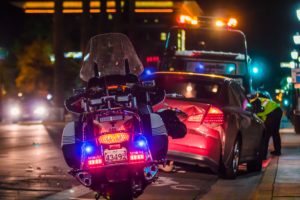When you are involved in a car accident, confusion is one of the most common difficulties afterward. There is the stress of the moment, lots of commotion and questions to answer. Most people know to report collisions to police so we expect thorough investigations to explain who was at fault. The problem with this is the quick manner in which evidence disintegrates following a car accident. First, witnesses who may stop often leave shortly afterward because they don’t have time to wait for police or they figure that enough people saw what happened that they aren’t needed.
When police do arrive, we expect that they will conduct a thorough investigation so that fault for the accident can be determined. Unfortunately, a good investigation goes beyond merely giving someone a traffic ticket. What police do not do is often crucial later on for many different reasons. An example would be the loss of so much evidence that police essentially determine no traffic crime has occurred because it’s one person’s word against another.
Here are eight things to keep top of mind after a car accident that can help you immediately and later on:
1. Call 911 and report the accident to police.
Sometimes police will not respond, specifically if the accident occurs in a parking lot and there is no apparent injuries, but you must call them anyway to report the accident. Additionally, failure to report an accident can result in charges being filed against you by law enforcement. Don’t take any chances.
2. Call a friend or family member
Having a friend at the scene with you, will offer you comfort and assistance, especially if you have been injured. Family or friends can often arrive more quickly than police and can make valuable observations.
3. Talk to Witnesses on the Scene
Regardless of whether a friend or family member can or cannot be of assistance, get names and contact information of people who might have seen what happened but need to leave before police arrive. Most folks are willing to be contacted by police later, they just often have jobs they need to get to and assume that others will tell police what they saw.
4. Take Photographs
TAKE PHOTOGRAPHS OF THE VEHICLES BEFORE THEY ARE MOVED FROM THE POSITION WHERE THEY CAME TO REST! Shoot multiple photos from multiple different angles all around the collision site.
Sometimes people do not take responsibility for being negligent and we have to get accident reconstructions later on (this has been really common of late for some reason.). Photos can help the reconstructionist (an expert) to put the collision back together and reach conclusions as to who was the responsible party. It’s kind of like the real life CSI.
Also, TAKE PICTURES OF YOUR INJURIES both shortly after the accident and a couple of days afterward. This is because most injuries become easily visible after a couple of days, but obviously will fade over time and obviously photos can help you explain what you went through.
5. Give your statement
When police arrive (assuming they respond to the scene) give a detailed statement of what happened. This allows you to have a source of recollection later on especially when you have to remember what happened many months or even years later. Make sure to report any injuries you are feeling at the time and where you are experiencing any pain, but also know it is not unusual for the adrenaline you are experiencing to mask the injuries you may have sustained.
6. Call your Insurance Company
Call your insurance company and report the collision. Most likely your insurance contract requires it and failure to make a report could be a violation of your contract with them. Beyond that you want your insurer to begin their claim process as required by law. It’s also what you pay them for.
7. Seek Medical Care
If you are injured, go to the hospital or see a doctor immediately. It’s important to begin documentation of your injuries as soon as possible in these circumstances.
In car accident situations resulting in intense injuries and unbearable pain, it is recommended to go the nearest Emergency Room. It is typical treatment for the ER to use CT scans to diagnose active bleeds and x-rays to diagnose broken bones, along with administering medication for pain.
If pain is significant enough, going to an ER may be necessary, but you can also check to see if one of the smaller “emergency” or “urgent care” clinics can be a simpler solution for purposes of obtaining pain relief while you are waiting to see your primary doctor. In many instances you can see a doctor faster than in an ER and thus faster pain control to buy you time to see your primary doctor for actual treatment recommendations. Some of these smaller clinics may also have the ability to perform x-rays just to confirm no fractures if that is one of your needs.
My suggestion here is simply be an informed consumer of your health care system and know how to get what is best for your in the short term.
8. Educate Yourself
See our blog regarding the statute of limitations, but if you are seriously injured it may be necessary to get an attorney involved as soon as possible. Each person’s circumstances are different so give us a call at 719-633-6620 for a free initial consultation and we can help you work through what the best approach is for you.

